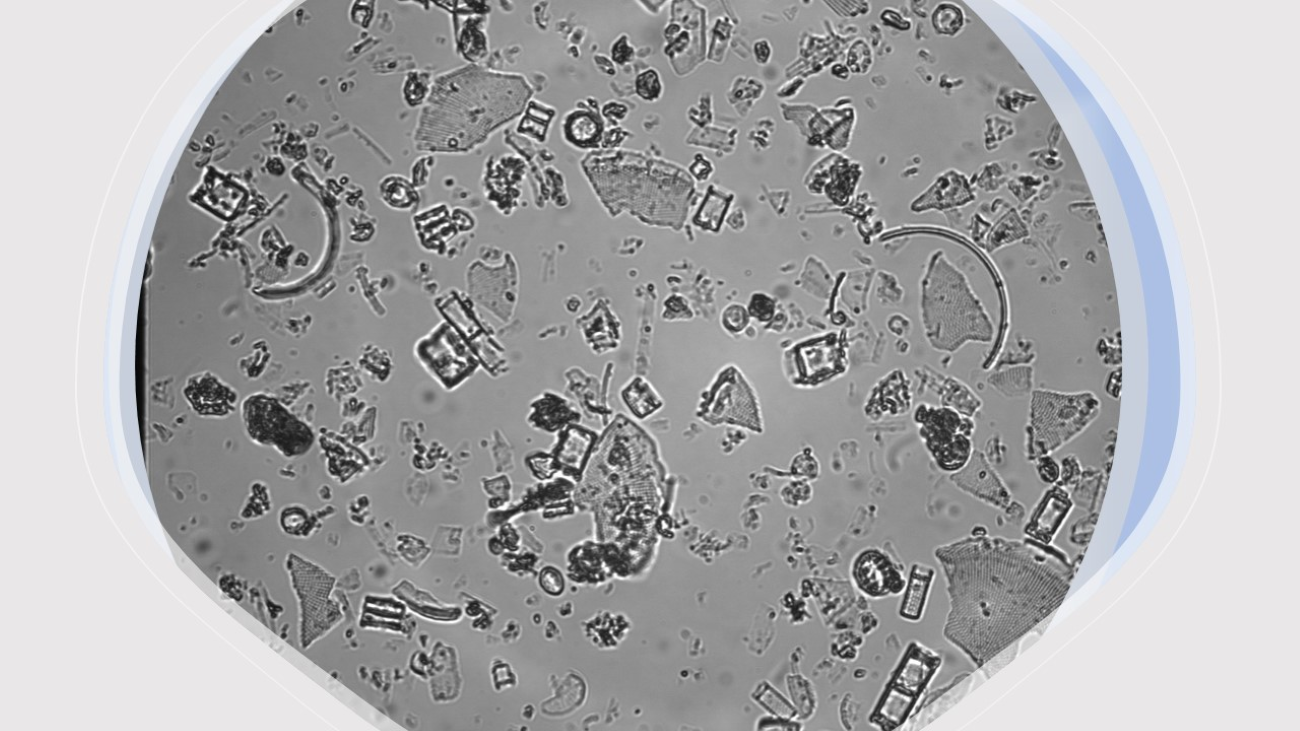Non-microbiological turbidity of beer: Part 1 – semireview
DOI:
https://doi.org/10.18832/kp2021.67.484Keywords:
beer, colloidal turbidity, protein turbidity, protein-polyphenol turbidity, haze, microscopic analysis, image analysis, particle identificationAbstract
Beer is a complex mixture consisting of hundreds of chemical substances. Some of them are macromolecules, such as proteins and polysaccharides that together with polyphenolic compounds form poorly soluble complexes causing beer turbidity or cold colloidal turbidity. Furthermore, beer turbidity can be caused also by procedural particles entering into beer during brewing process (filtration and stabilization aids) or by foreign particles from external environment (mechanical impurities). If turbidity, sediment or individual particles occur in filtered and stabilized beer, their origin must be determined since brilliant visual impression of the filtered beer influences an opinion of customers on a specific product. The identification of different species of turbidity using microscopic image, particle staining, enzymatic analysis or identification precursors is clearly described in this paper. The study includes pictorial documentation of various particles that may be part of beer turbidity.
References
Andres-Bello, A., Barreto-Palacios, V., Garcia-Segovia, P., Mir-Bel, J., Martinez-Monzo, J. (2013). Effect of pH on color and texture of food products. Food Engineering Reviews, 5(3), 158–170. https://doi.org/10.1007/s12393-013-9067-2
Apperson, K., Leiper, K., McKeown, I., Birch, D. (2002). Beer fluorescence and the isolation, characterisation and silica adsorption of haze-active beer proteins. Journal of the Institute of Brewing, 108(2), 193–199. https://doi.org/10.1002/j.2050-0416.2002.tb00540.x
Aron, P. M., Shellhammer, T. H. (2010). A discussion of polyphenols in beer physical and flavour stability. Journal of the Institute of Brewing, 116(4), 369–380. https://doi.org/10.1002/j.2050-0416.2010.tb00788.x
Asano, K., Shinagawa, K., Hashimoto, N. (1982). Characterization of haze-forming proteins of beer and their roles in chill haze formation. Journal of the American Society of Brewing Chemists, 40(4), 147–154. https://doi.org/10.1094/ASBCJ-40-0147
Bamforth, C. W. (1999). Beer haze. Journal of the American Society of Brewing Chemists, 57(3), 81–90.
Bamforth, C. W. (2011). 125th Anniversary review: The non-biological instability of beer. Journal of the Institute of Brewing, 117(4), 488–497. https://doi.org/10.1002/j.2050-0416.2011.tb00496.x
Bamforth, C. W. (2016). Chapter 12 – Haze Measurement. In: Charles W. Bamforth (Ed.), Brewing Materials and Processes (pp. 251–256). San Diego: Academic Press. https://doi.org/10.1016/B978-0-12-799954-8.00012-5
Basařová, G. (1993). Pivovarsko-sladařská analytika. Praha: Merkanta. Bradford, M. M. (1976). A rapid and sensitive method for the quantitation of microgram quantities of protein utilizing the principle of protein-dye binding. Analytical Biochemistry, 72, 248–254. https://doi.org/10.1006/abio.1976.9999
Cai, G., Li, X., Zhang, C., Zhang, M., Lu, J. (2016). Dextrin as the main turbidity components in wort produced from major malting barley cultivars of Jiangsu province in China. Journal of the Institute of Brewing, 122(3), 543–546. https://doi.org/10.1002/jib.356
Callemien, D., Collin, S. (2010). Structure, organoleptic properties, quantification methods, and stability of phenolic compounds in beer-a review. Food Reviews International, 26(1), 1–84. https://doi.org/10.1080/87559120903157954
Chhabra, R., Basavaraj, M. G. (Eds.). (2019). Chapter 13 – Colloidal dispersions. In: Coulson and Richardson’s Chemical Engineering (Sixth Edition) (Sixth Edition, pp. 693–737). Butterworth-Heinemann. https://doi.org/10.1016/B978-0-08-101098-3.00014-7
Dienstbier, M., Jankova, L., Sladky, P., Dostalek, P. (2010). Methods for prediction of beer colloidal stability. Chemicke Listy, 104(2), 86–92.
DIN EN ISO 7027-1 (2016). Water quality — Determination of turbidity — Part 1: Quantitative methods, Pub. L. No. DIN EN ISO 7027-1, 9. Retrieved from https://www.iso.org/standard/62801.html
Douglas, S.G. (1981). A rapid method for the determination of pentosans in wheat flour. Food Chemistry, 7(2), 139–145. https://doi. org/10.1016/0308-8146(81)90059-5
EBC 9.11. (2002). Analytica EBC. Total Polyphenols in Beer by Spectrophotometry. Fachverlag Hans Carl, Nürnberg. Retrieved from https://brewup.eu/ebc-analytica
EBC 9.12. (1997). Analytica EBC. Flavanoids in Beer by Spectrophotometry. Fachverlag Hans Carl, Nürnberg. Retrieved from https://brewup.eu/ebc-analytica
EBC 9.19. (2002). Analytica EBC. Calcium in Beer by Atomic Absorption Spectrophotometry. Fachverlag Hans Carl, Nürnberg. Retrieved from https://brewup.eu/ebc-analytica
EBC 9.29. (2015). Analytica EBC. Haze in Beer: Calibration of Haze Meters. Fachverlag Hans Carl, Nürnberg. Retrieved from https://brewup.eu/ebc-analytica
EBC 9.30. (1997). Analytica EBC. Prediction of Shelf-life of Beer. Fachverlag Hans Carl, Nürnberg. Retrieved from https://brewup.eu/ebc-analytica
EBC 9.31.2. (2008). Analytica EBC. High Molecular Weight β-Glucan Content of Beer: Fluorimetric Method. Fachverlag Hans Carl, Nürnberg. Retrieved from https://brewup.eu/ebc-analytica
EBC 9.40. (2012). Sensitive Proteins in Beer by Nephelometry. In Analytica-EBC. Nürnberg, Germany: Fachverlag Hans Carl. Retrieved from https://brewup.eu/ebc-analytica
Evans, D., Robinson, L., Sheehan, M., Tolhurst, R., Hill, A., Skerritt, J., Barr, A. (2003). Application of immunological methods to differentiate between foam-positive and haze-active proteins originating from malt. Journal of the American Society of Brewing Chemists, 61(2), 55–62.
Gabriel, P., Dienstbier, M., Sladky, P., Cerny, L. (1994). Vyuziti dvouuhloveho zakalomeru k rozliseni typu nekterych zakalotvornych castic. Kvasny prumysl, 40(7), 203–207. https://doi.org/10.18832/kp1994015
Glenister, P. R. (1975). Beer deposits: a laboratory guide and pictorial atlas for the study of the various particles found in the deposits of beer and ale. Miles Laboratories, Chicago. IL, USA.
Iimure, T., Nankaku, N., Watanabe-Sugimoto, M., Hirota, N., Tiansu, Z., Kihara, M., … Sato, K. (2009). Identification of novel haze-active beer proteins by proteome analysis. Journal of Cereal Science, 49(1), 141–147. https://doi.org/10.1016/j.jcs.2008.08.004
Izawa, M., Takashio, M., Tamaki, T. (1996). Determination of high molecular weight beta-glucan in wort and beer using a post-column calcofluor flow-injection-analysis (FIA). Journal of the Institute of Brewing, 102(3), 183–189. https://doi.org/10.1002/j.2050-0416.1996.tb00907.x
Jin, B., Li, L., Feng, Z.-C., Li, B., Liu, G.-Q., Zhu, Y.-K. (2011). Investigation of hordeins during brewing and their influence on beer haze by proteome analysis. Journal of Food Biochemistry, 35(5), 1522–1527. https://doi.org/10.1111/j.1745-4514.2010.00474.x
Kahle, E.-M., Zarnkow, M., Jacob, F. (2020a). Beer turbidity Part 1: A review of factors and solutions. Journal of the American Society of Brewing Chemists, 1–16. https://doi.org/10.1080/03610470.2020.1803468
Kahle, E.-M., Zarnkow, M., Jacob, F. (2020b). Identification and differentiation of haze substances using Raman microspectroscopy. Journal of the Institute of Brewing, 126(4), 362–370. https://doi.org/10.1002/jib.627
Kahle, E.-M., Zarnkow, M., Jacob, F. (2021). Beer turbidity Part 2: A review of Raman spectroscopy and possible future use for beer turbidity analysis. Journal of the American Society of Brewing Chemists, 79(2), 115–137. https://doi.org/10.1080/03610470.2020.1800345
Kotlíková, B., Jelínek, L., Karabín, M., Dostálek, P. (2013). Precursors and formation of colloidal haze in beer. Chemical Papers, 107, 362–368.
Kunz, Th., Chesnokova, A., Wietstock, P., Lutsky, V., Methner, F.-J. (2012). Acylphloroglucinol glucoside from hops: isolation, identification and haze-activity. Brewing Science, 65(7–8), 65–71.
Leiper, K. A., Stewart, G. G., McKeown, I. P. (2003). Beer polypeptides and silica gel part I. Polypeptides involved in haze formation. Journal of the Institute of Brewing, 109(1), 57–72. https://doi.org/10.1002/j.2050-0416.2003.tb00594.x
Loch-Ahring, S., Decker, F., Robbert, S., Andersson, J. T. (2008). Chill-haze – identification and determination of haze-active constituents by HPLC and mass spectrometry. Brewing Science, 61(3–4), 32–48.
Masar, M., Zuborova, M., Kaniansky, D., Stanislawski, B. (2003). Determination of oxalate in beer by zone electrophoresis on a chip with conductivity detection. Journal of Separation Science, 26(8), 647–652. https://doi.org/10.1002/jssc.200301375
Mastanjevic, K., Krstanovic, V., Lukinac, J., Jukic, M., Vulin, Z., Mastanjevic, K. (2018). Beer – the importance of colloidal stability (non-biological haze). Fermantation, 4(4). https://doi.org/10.3390/fermentation4040091
McMurrough, I., Baert, T. (1994). Identification of proanthocyanidins in beer and their direct measurement with a dual electrode electrochemical detector. Journal of the Institute of Brewing, 100(6), 409–416. https://doi.org/10.1002/j.2050-0416.1994.tb00839.x
MEBAK 2.3. (2013). Photometric Iodine Test. In: J. Fritz (Ed.), MEBAK – Wort, Beer, Beer-based Beverages. Germany: Freising-Weihenstephan.
MEBAK 2.6.3.1. (2013). Precipitation with Magnesium Sulfate. In: J. Fritz (Ed.), MEBAK – Wort, Beer, Beer-based Beverages. Germany: Freising-Weihenstephan.
MEBAK 2.14.2.4. (2013). Precipitation with Ammonium Sulfate. In: J. Fritz (Ed.), MEBAK – Wort, Beer, Beer-based Beverages. Germany: Freising-Weihenstephan.
MEBAK 2.16.3. (2013). Tannoids. In: J. Fritz (Ed.), MEBAK – Wort, Beer, Beer-based Beverages. Germany: Freising-Weihenstephan.
MEBAK 2.22.2. (2013). Oxalate by Ion Chromatography with Conductivity detection. In: J. Fritz (Ed.), MEBAK – Wort, Beer, Beer-based Beverages. Germany: Freising-Weihenstephan.
Mundy, A., Boley, N. (1999). A survey of instrumentation used for the determination of haze in beer. Journal of the Institute of Brewing, 105(2), 75–78. https://doi.org/10.1002/j.2050-0416.1999.tb00008.x
Niemsch, K., Heinrich, T. (2006). Current problems of colloidal haze of beer. Kvasny prumysl, 52(1), 7–8. https://doi.org/10.18832/kp2006033
Pahl, R. (2015). Beer Turbidity: Reasons, Analytics and Avoidance. Presented at the Craft Brewers Conference, Portland, Oregon: VLB Berlin. Retrieved from http://www.craftbrewersconference.com/
wp-content/uploads/2015_presentations/R1320_Roland_Pahl.pdf
Robinson, L. H., Healy, P., Stewart, D. C., Eglinton, J. K., Ford, C. M., Evans, D. E. (2007). The identification of a barley haze active protein that influences beer haze stability: The genetic basis of a barley malt haze active protein. Journal of Cereal Science, 45(3), 335–342. https://doi.org/10.1016/j.jcs.2006.08.013
Šavel, J., Zvihalová, D., Prokopová, M. (1996). Rychle stanoveni zakalotvornych latek piva. Kvasny Prumysl, 42(1), 11–15. https://doi.org/10.18832/kp1996001
Šavel, J., Prokopová, M. (1992). Jak volit teplotní šokování. Kvasny prumysl, 38(10), 290–292. https://doi.org/10.18832/kp1992027
Siebert. (2009). Haze in beverages. In: Taylor, SL (Ed.), Advances in Food and Nutrition Research, Vol. 57 (Vol. 57, pp. 53–86). https://doi.org/10.1016/S1043-4526(09)57002-7
Siebert, Carrasco, A., Lynn, P. (1996). Formation of protein-polyphenol haze in beverages. Journal of Agricultural and Food Chemistry, 44(8), 1997–2005. https://doi.org/10.1021/jf950716r
Siebert, K. J. (1999). Effects of protein-polyphenol interactions on beverage haze, stabilization and analysis. Journal of Agricultural and Food Chemistry, 47(2), 353–362. https://doi.org/10.1021/jf980703o
Siebert, K.J. (2000). Relationship of particle size to light scattering. Journal of the American Society of Brewing Chemists, 58(3), 97–100. https://doi.org/10.1094/ASBCJ-58-0097
Siebert, K. J. (2006). Haze formation in beverages. LWT-Food Science and Technology, 39(9), 987–994. https://doi.org/10.1016/j.lwt.2006.02.012
Sikorska, E., Gorecki, T., Khmelinskii, I., Sikorski, M., De Keukeleire, D. (2006). Monitoring beer during storage by fluorescence spectroscopy. Food Chemistry, 96(4), 632–639. https://doi.org/10.1016/j.
foodchem.2005.02.045
Sladky, P., Cisarova, H., Dienstbier, M., Gabriel, P. (2001). Vyvoj koloidnich zakalu svetleho lezaku behem starnuti. Kvasny Prumysl, 47(11), 322–327. https://doi.org/10.18832/kp2001024
Sohrabvandi, S., Mousavi, S. M., Razavi, S. H., Mortazavian, A. M. (2010). Application of advanced instrumental techniques for analysis of physical and physicochemical properties of beer: A review. International Journal of Food Properties, 13(4), 744–759. https://doi.org/10.1080/10942910902818145
Speers, R., Jin, Y., Paulson, A., Stewart, R. (2003). Effects of beta-glucan, shearing and environmental factors on the turbidity of wort and beer. Journal of the Institute of Brewing, 109(3), 236–244. https://doi.org/10.1002/j.2050-0416.2003.tb00164.x
Steiner, E., Arendt, E. K., Gastl, M., Becker, T. (2011). Influence of the malting parameters on the haze formation of beer after filtration. European Food Research and Technology, 233(4), 587–597. https://doi.org/10.1007/s00217-011-1547-0
Steiner, E., Becker, T., Gastl, M. (2010). Turbidity and haze formation in beer – insights and overview. Journal of the Institute of Brewing, 116(4), 360–368. https://doi.org/10.1002/j.2050-0416.2010.tb00787.x
Teumer, T., Raedle, M., Methner, F.-J. (2019). Possibility of monitoring beer haze with static light scattering, a theoretical background. Brewing Science, 72(7–8), 132–140. https://doi.org/10.23763/BrSc19-15teumer
Wainwright, T. (1974). Nonbiological hazes and precipitates in beer. Brewer’s Dig., 49(5), 38–48.

Downloads
Published
How to Cite
Issue
Section
License
Copyright (c) 2021 Jana Olšovská, Lucie Kyselová, Petra Kubizniaková, Martin Slabý

This work is licensed under a Creative Commons Attribution 4.0 International License.







